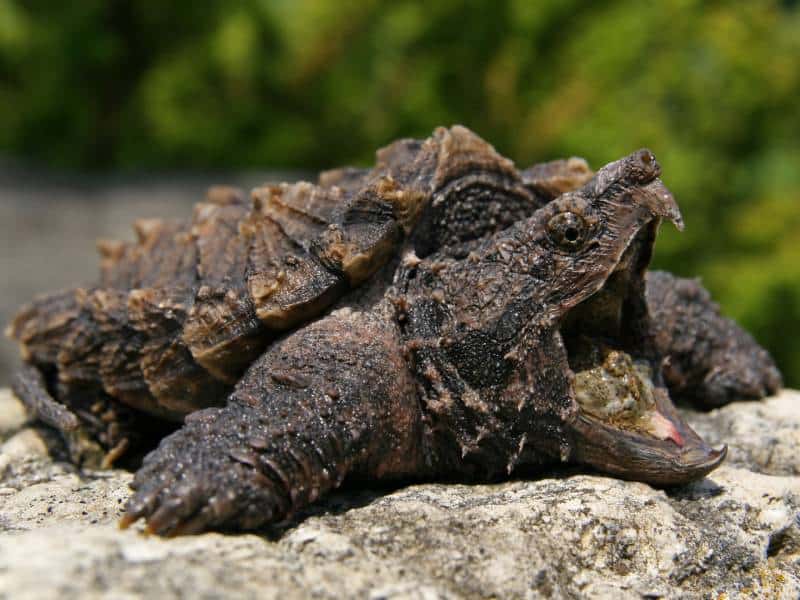Living along the coast and in wetlands certainly has its perks, and chief among them is the ability to spot a ton of aquatic wildlife. There are over 30 turtle species throughout Florida, including five different sea turtles.
In this guide, we covered all five sea turtle species and seven of the most common turtle species that you can find!
The 12 Turtles Found in Florida
1. Loggerhead
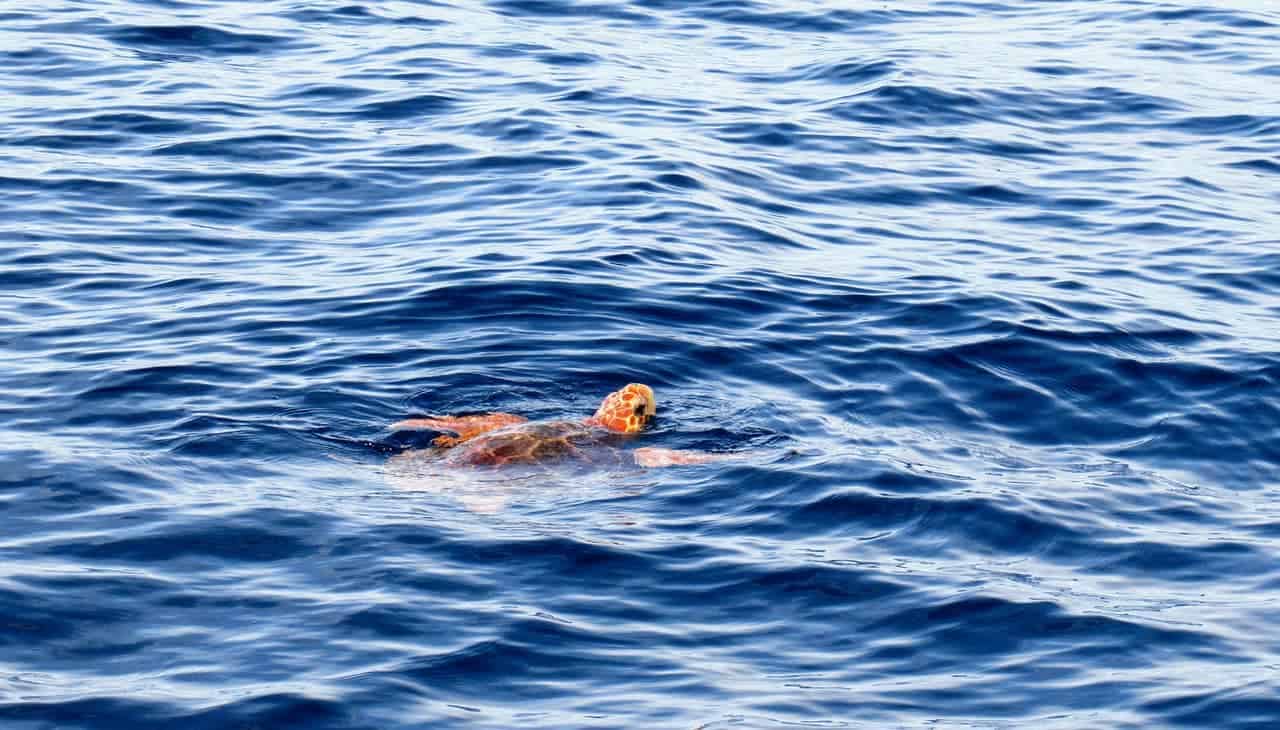
| Species: | Caretta caretta |
| Longevity: | 70 to 80 years |
| Good to own as a pet?: | No |
| Legal to own?: | No |
| Adult size: | 2.5 to 3.5 feet |
| Diet: | Bottom-dwelling invertebrates |
There are five different sea turtles that you can spot in Florida, but the Loggerhead is by far the most common. They can grow to an impressive 3.5 feet and feed on bottom-dwelling invertebrates and can live as long as 80 years!
Like all sea turtles, they are a protected species, which means it’s illegal to capture or own one of these majestic creatures. Not that you’d likely have the space to care for them, anyway, as they can weigh up to 350 pounds!
2. Green Turtle

| Species: | Chelonia mydas |
| Longevity: | 70 to 80 years |
| Good to own as a pet?: | No |
| Legal to own?: | No |
| Adult size: | 3 to 4 feet |
| Diet: | Algae, seagrass, invertebrates, and discarded fish |
A sea turtle that you can find in Florida is the green turtle. Despite their slightly larger size, they max out at the same 350-pound weight threshold as the loggerhead turtle.
The green turtle is an endangered species, though, so spotting these turtles can be a bit challenging. If you do see them, you need to leave them alone.
They eat a wide array of foods, including algae, seagrass, and small invertebrates, making them more of an opportunistic feeder. These turtles can live up to 80 years in the wild, giving them one of the longest lifespans of wild animals.
3. Leatherback
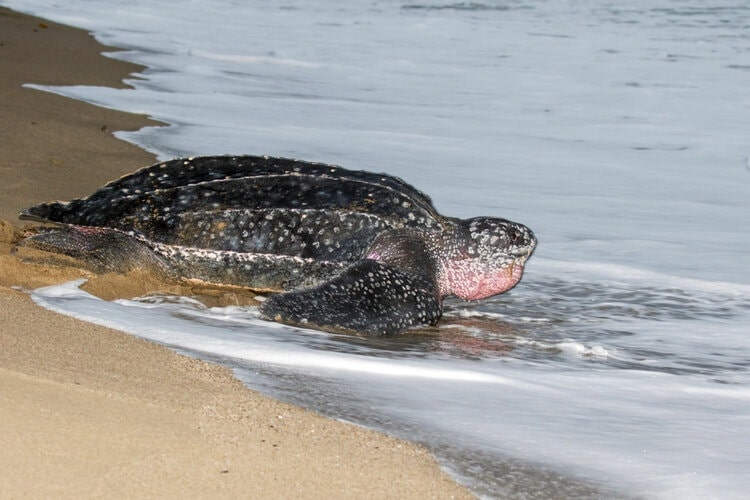
| Species: | Dermochelys coriacea |
| Longevity: | 30 to 40 years |
| Good to own as a pet?: | No |
| Legal to own?: | No |
| Adult size: | 6 to 7 feet |
| Diet: | Jellyfish, seaweed, fish, crustaceans, and other invertebrates |
There’s no more impressive sea turtle than the Leatherback, and if you’re lucky, you can spot a few of them off the coast of Florida. While the Leatherback turtle isn’t officially categorized as endangered yet, they are listed as vulnerable.
These impressive turtles can grow up to 7 feet in length and weigh more than 1,500 pounds! While their exact lifespan is unknown, we do know that they live at least 30 years.
A leatherback sea turtle can reach speeds up to 22 miles per hour in the water. They eat a combination of jellyfish, seaweed, fish, crustaceans, and other invertebrates to reach their massive size.
4. Kemp’s Ridley
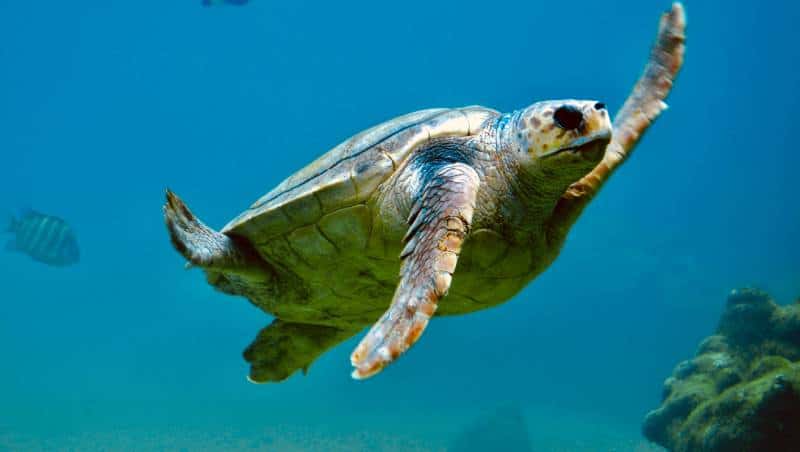
| Species: | Lepidochelys kempi |
| Longevity: | 30 to 40 years |
| Good to own as a pet?: | No |
| Legal to own?: | No |
| Adult size: | 2 feet |
| Diet: | Crabs, jellyfish, and small mollusks |
If you’re looking to spot a Kemp’s Ridley sea turtle in Florida, you’re going to have your work cut out for you. They’re currently listed as critically endangered ,with only 7,000 to 9,000 left alive.
While that’s a disappointingly low number, there were only about 200 alive in the 1980s, so that’s a pretty stark improvement!
These are among the smallest sea turtles in the world, although they can still reach an impressive 2 feet in length and weigh close to 90 pounds.
Due to their dwindling numbers just 40 years ago, the exact lifespan of Kemp’s Ridley sea turtles is still unknown, but it’s at least 30 to 40 years.
5. Hawksbill
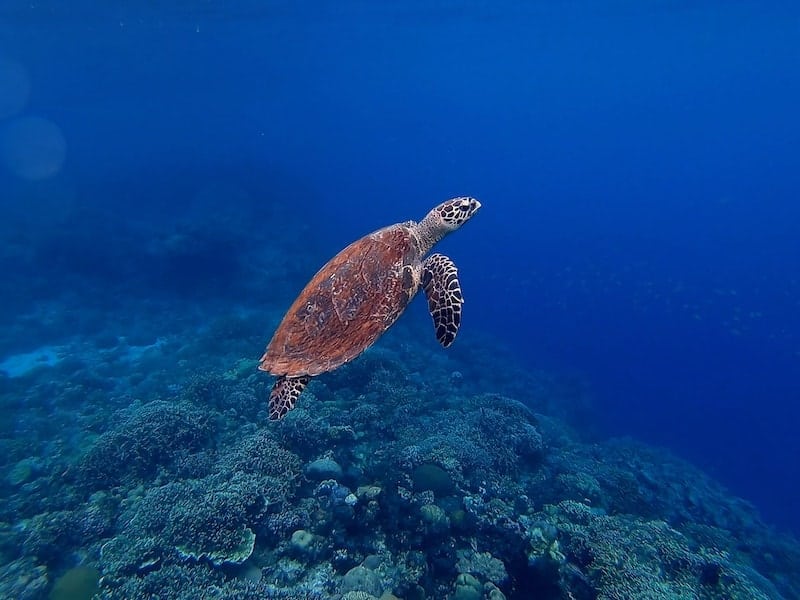
| Species: | Eretmochelys imbricata |
| Longevity: | 50 to 60 years |
| Good to own as a pet?: | No |
| Legal to own?: | No |
| Adult size: | 3 feet |
| Diet: | Sea sponges, algae, corals, mollusks, tunicates, crustaceans, sea urchins, small fish, and jellyfish |
A sea turtle species that you can spot in Florida is the Hawksbill. Just like the Kemp’s Ridley sea turtle, the Hawksbill is critically endangered. While there are currently about 25,000 nesting females globally, their long-term prognosis doesn’t look good.
These impressive turtles can live up to 60 years and reach a size of 3 feet, while weighing close to 175 pounds! They are opportunistic feeders, eating sea sponges, algae, jellyfish, and invertebrates alike.
If you’re looking to spot one of these creatures in Florida, you’ll need to come between June and August, as this is when nesting females come ashore to lay their eggs.
6. Florida Softshell

| Species: | Apalone ferox |
| Longevity: | 30 years |
| Good to own as a pet?: | Yes |
| Legal to own?: | Yes |
| Adult size: | 6 to 12 inches for males and 12 to 24 inches for females |
| Diet: | Snails, fish, and occasionally, waterfowl |
While you can’t own any sea turtles in Florida, they’re far from the only turtles that you can find. The Florida softshell turtle lives throughout the entire state and makes a great pet — although females can require 150-gallon enclosures or larger.
Keep in mind that Florida softshell turtles do bite, so be careful when handling them. They are also an aggressive turtle species, so it’s best if you house them alone.
7. Gulf Coast Smooth Softshell
| Species: | Apalone mutica calvata |
| Longevity: | 50 years |
| Good to own as a pet?: | Yes |
| Legal to own?: | Yes |
| Adult size: | 4.5 to 10.5 inches for males and 6.5 to 14 inches for females |
| Diet: | Crayfish and other aquatic insects |
While you can find the Florida softshell turtle throughout the state, if you’re looking for a Gulf Coast smooth softshell turtle, you’ll have to head up to the panhandle.
They bite and are relatively aggressive, although males and females are much closer in size. The Gulf Coast smooth softshell turtle is relatively small, but you still have to be careful when handling them.
8. Snapping Turtle
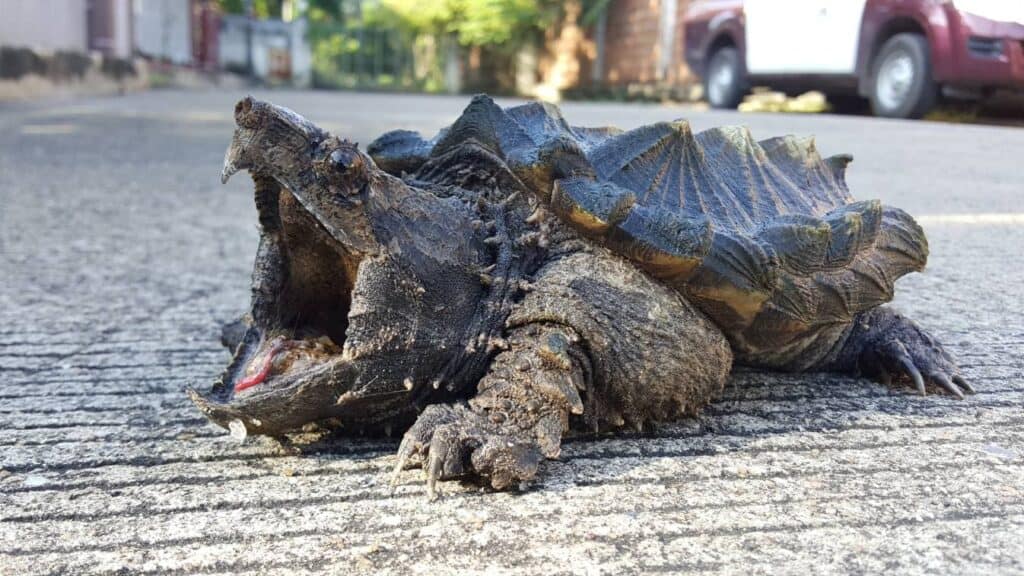
| Species: | Chelydra serpentina |
| Longevity: | 15 and 45 years |
| Good to own as a pet?: | No |
| Legal to own?: | Yes |
| Adult size: | 8 to 14 inches |
| Diet: | Carrion, invertebrates, fish, birds, small mammals, and amphibians |
There are few turtles better known for their aggressiveness than the snapping turtle. While many people assume that they have small necks, their neck can actually reach across 2/3 the length of their body!
They have claws on each foot too, so you need to watch out for them when handling them. Due to their aggressive tendencies, they don’t make great pets for first-time turtle owners.
9. Alligator Snapping Turtle
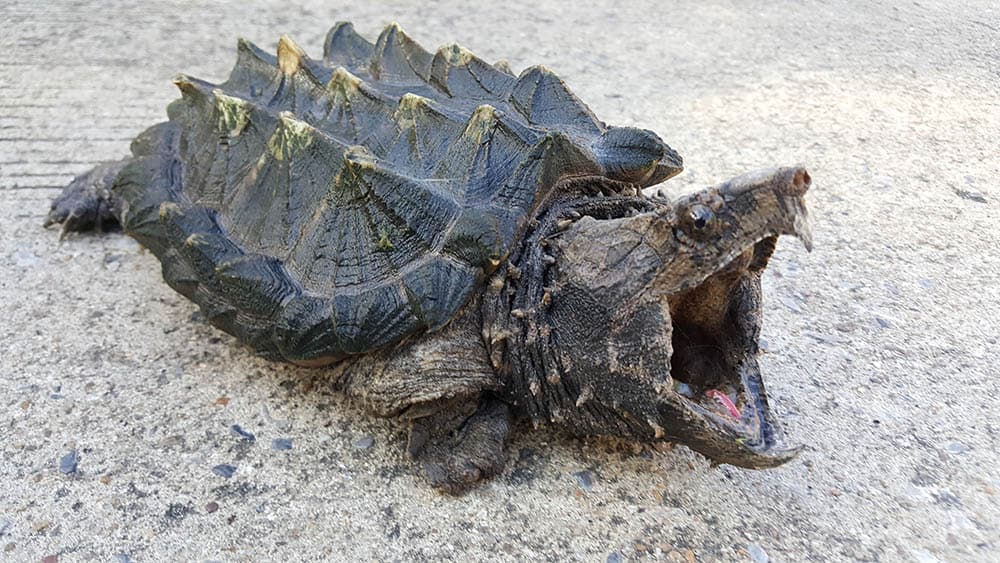
| Species: | Macrochelys temminckii |
| Longevity: | 50 to 100 years |
| Good to own as a pet?: | No |
| Legal to own?: | Yes |
| Adult size: | Up to 26 inches |
| Diet: | Fish, aquatic animals, and vegetation |
While the alligator snapping turtle is just another type of snapping turtle, their unique appearance warrants a special spot on our list. They have a prehistoric-looking appearance that makes them extremely popular among collectors.
They can live up to 100 years in captivity, although you still need to be careful of their sharp claws and strong bite whenever handling them. They can reach an impressive 26 inches in size and weigh up to 175 pounds, so it’ll take a bit of brawn to move them too.
Due to their much larger size and aggressive tendencies, they don’t make the best pets, although it certainly is possible to own one.
10. Spotted Turtle

| Species: | Clemmys guttata |
| Longevity: | 5 to 50 years |
| Good to own as a pet?: | Yes |
| Legal to own?: | Yes |
| Adult size: | 3.5 to 5 inches |
| Diet: | Algae, plants, water lily seeds, worms, mollusks, crustaceans, insects, and insect larvae |
If you’re looking for a pet turtle, the spotted turtle is an outstanding choice. They are small, which means they don’t need a large tank.
You can find wild spotted turtles throughout most of Florida, but they are noticeably absent from the bottom third of the peninsula and the western part of the panhandle. They eat smaller plants and invertebrates and can live anywhere from 25 to 50 years in the wild.
11. Chicken Turtle

| Species: | Deirochelys reticularia |
| Longevity: | 20 to 25 years |
| Good to own as a pet?: | Yes |
| Legal to own?: | Yes |
| Adult size: | 6 to 9 inches |
| Diet: | Insects, amphibian larvae, small fish, and crayfish |
You can find chicken turtles throughout the entire state of Florida in abundance. They are anywhere from 6 to 9 inches in size, and they feed on small insects, amphibian larvae, and small fish.
Their small size makes them popular pets. If you’re wondering how they got their name, it has nothing to do with their appearance. Instead, it’s about the way that they taste. Many consumers claim that they taste just like chicken, and the name stuck.
12. Red-Eared Sliders
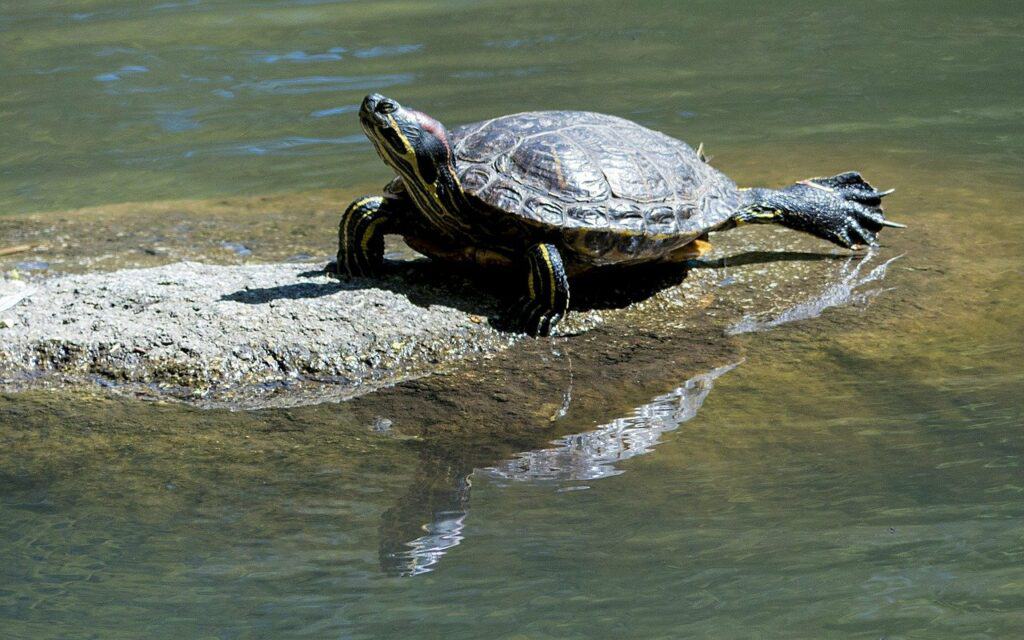
| Species: | Trachemys scripta elegans |
| Longevity: | 20 years |
| Good to own as a pet?: | Yes |
| Legal to own?: | Yes |
| Adult size: | 12 inches |
| Diet: | Vegetation, small fish, dead frogs, decaying fish, and almost anything else |
There are tons of slider species throughout Florida, but the most common is probably the red-eared slider. They have a natural range that encompasses almost the entire state, with only a small portion of the western side of the peninsula being exempt.
They can get up to 12 inches in length and are opportunistic feeders, eating just about anything that they can find. While the red-eared slider can bite, they have a docile nature that makes biting rare and makes them a great pet.
Owning a Turtle
While it’s certainly tempting to own a turtle, keep in mind that you should only keep a captive-bred turtle as a pet. Leave the wild turtle in the wild, so their populations will continue to thrive and you won’t disrupt the local ecosystem.
Also, keep in mind that turtles need a ton of space and live a long time. So, you’re likely making a 50-year commitment and will need anywhere from a 50-gallon to a 150-gallon enclosure.

Conclusion
The next time that you head to the beach or even the lake in Florida, keep an eye out for turtles. With over 30 different species in the state, there’s a good chance that you can spot a few local turtles, but you might miss them if you don’t look!
Also See:
Featured Image Credit: Ryan M. Bolton, Shutterstock
